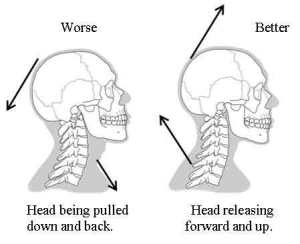ZoukSide Down – A journey with Brazilian Zouk
A personal blog aimed at contributing, and paying homage, to the most sensual, beautiful dance of Brazil.
Dancing with Alexander Technique
Right from the moment I embrace my partner I can feel how her body works. I can feel how she breathes and how she holds her body. Above all, I can feel whether her body is working together as one, or as a collection of parts. From this, I can predict a lot about how the rest of the dance will go. When I watch people dancing, my gaze tends to go to those with good, relaxed body alignment. A person who stands and moves well is pleasing to the eye, sometimes even when they are not dancing well.
Given all this, it makes a lot of sense to improve our body alignment, control over tension, and the way we move naturally. One method for doing so is Alexander Technique. It is a method for improving the way we use our bodies and minds. It helps to free our bodies of excess tension and return them to naturally good alignment. The lessons involve hands-on teaching, and use of mental directions and sometimes imagery. Since it’s a method where body awareness, kinaesthetic experience and internal experience play a huge role, it’s notoriously difficult to explain clearly to people who haven’t tried it. It’s popular among singers, musicians, actors and dancers, as well as normal office workers. (Incidentally, the very first post in this blog was about it.)
For me, improving my posture while dancing has been a long-term project. For at least two years, I had been trying to keep my chest open while dancing. It would look ok for a while, but then my chest started to close and shoulders come forward again when I stopped focusing on keeping the chest open.
I had long been interested in Alexander Technique, but never got around to taking a lesson. Then, last spring, my wife arranged one for me as a birthday gift. I had some idea of what to expect from my reading, but the reality still managed to surprise me.
Physically, the lesson consisted of the teacher using his hands to hold and apply slight pressure to various parts of my body, mainly focusing on the neck area, while I sat, stood, and moved from sitting to standing and back. There was also table work, where I was lying down on the table, and the teacher was working on different parts of my body. The mental part of the lesson was about how I directed my attention to my body, with the teacher giving me instructions about mental images to use and what to focus on.
At the end of the lesson I felt like I was slouching. However, when I looked in the mirror, I could see that I was standing tall, with my body in good alignment. My upper body was relaxed, and my shoulders seemed wider than normal. The view was good, but very different from the way I felt when I previously tried to have a good posture. There was less lifting of the chest, and much less tension. That’s why I felt like I was slouching – I was simply not used to standing like this, upright with minimal tension. My body awareness was not trustworthy. When I walked about after, my wife told me that it looked very grounded and relaxed, but at the same time perfectly upright.
The teacher’s hands had given me the kinaesthetic experience I could have never gotten from books. I was able to apply the lesson to my dancing immediately afterwards. In the very next practice I felt like I was moving in a more relaxed, free way. From the practice videos, I could see that the way I moved and held my body was better than before. Based on feedback of women I’ve danced with, my body now apparently feels very relaxed in close embrace.
If you wish to do the comparison yourself, above is a video of a demo I did a few months before my first Alexander Technique lesson. Below is a practice video a few days after.
In the first video I’m using excess tension to hold my posture and to open my chest. My back is narrow and my chin is lifted in a way that takes my head out of good alignment with my neck. In the second video, it is clear (at least to me) that things have much improved. I’m moving in a much more relaxed way but in good alignment, my neck is long, and back wide.
I’ve taken more lessons since the first one, and plan to continue with them. Alexander Technique has made a dramatic difference for me.
Author of this article: Jukka Välimaa
More information about Alexander Technique: alexandertechnique.com


It occurs to me that the article may give impression of Alexander Technique as quick fix. That is not the idea. In my particular case the immediate effect was great, perhaps because I was in the right place body awareness-wise to get much out of the first lesson.
LikeLike
Wonderful! I’m an Alexander Teacher and I’m very impressed about the change you’ve made after just one Alexander lesson. There’s much more flow and a sense of communication between you and your partner. Well done. Hope you’ll keep up the good work.
LikeLike
Thank you! I think the better sense of communication is not related to Alexander technique; I was just in better dancing mood when the second video was taken. But the difference in my own movement and body alignment definitely is because of AT.
LikeLike